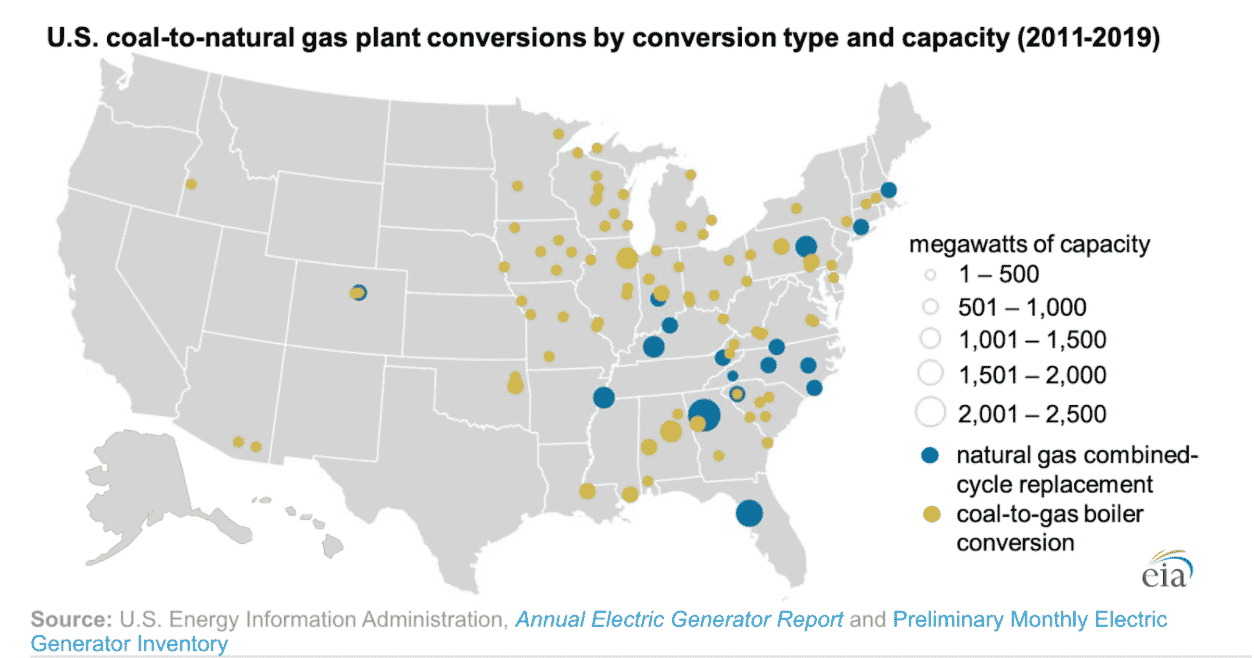Over 85 Percent of U.S. Power Plants Switched From Coal to Natural Gas Since 2011: EIA

From 2011 to 2019, the U.S. repurposed 121 coal-fired plants to burn other fuels, of which 103 switched to natural gas, according to an Aug. 5 report from the U.S. Energy Information Administration. The agency attributed the trend to stricter emission standards, low gas prices, and more efficient natural gas turbine technology. Of the 316.8-gigawatts of coal capacity that existed at the end of 2010, 49.2 gigawatts retired by the end of 2019.
Coal plants were repurposed by either replacing with a new gas-fired combined-cycle plant or converting their boilers to burn other fuels, primarily natural gas. According to the agency, 14.3 gigawatts of the capacity had the boiler converted to burn natural gas, and 15.3 gigawatts was replaced with natural gas combined cycle (NGCC). Advanced turbine technology enabled the 17 new NGCC plants to have a total generating capacity of 15.3 gigawatts, 94 percent higher than the original 7.9 gigawatts of coal-fired capacity.
Coal-fired plants in the eastern region prefer to convert to natural gas boilers as they have relatively smaller-capacity units and are mostly above 50 years old. Among the 104 coal-fired power plants over 50 years old, 86 have adopted natural gas boilers, accounting for 14.3 gigawatts of capacity.
In addition, five out of the eight planned natural gas combined cycle plants construction will replace existing coal plants. The agency expects more conversions will take place in the Midwest and Southeast area in the future.
EnerKnol Pulses like this one are powered by the EnerKnol Platform—the first comprehensive database for real-time energy policy tracking. Sign up for a free trial below for access to key regulatory data and deep industry insights across the energy spectrum.
ACCESS FREE TRIAL